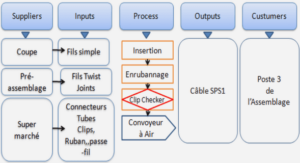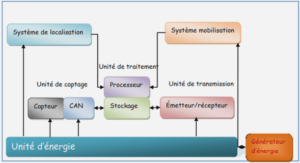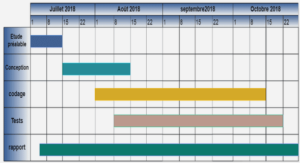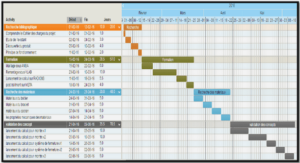L’abeille domestique
Comparison of bee packages method and nuclei methods to optimize honeybee (Apis mellifera L.) production
Résumé
Au Québec, il y a un besoin croissant en colonies d’abeilles domestiques pour satisfaire la demande en services de pollinisation et remplacer la forte mortalité hivernale de colonies. L’objectif principal de notre étude était de développer une méthodologie pour la production de nouvelles colonies qui est à la fois plus structurée et mieux adaptée à l’industrie apicole canadienne d’aujourd’hui. Une technique de paquet d’abeilles (1 kg d’abeilles adultes + une jeune reine fécondée) et deux techniques de confection de nucléi (un ou deux cadre(s) de couvain + jeune reine fécondée) ont été testées au Centre de Recherche en Sciences Animales de Deschambault. Ces colonies ont été suivies de juillet 2014 à juin 2015, à l’aide de plusieurs paramètres destinés à évaluer leur force et la présence de pathogènes. Nos résultats n’établissent aucune différence de force entre les techniques, cependant ils démontrent que le nucléus à un cadre de couvain offre le plus grand potentiel de multiplication comparé aux deux autres techniques testées. Cette méthode est la plus avantageuse économiquement, permettant de produire jusqu’à six nucléi à partir de la même colonie-mère. De plus, cette étude confirme que la production de nucléi réduit l’essaimage et l’infestation en varroa des colonies-mères.
Abstract
In Canada, there is a growing need for additional honeybee colonies to satisfy the demand for pollination services and compensate for high winter colony mortality. The main objective of our study was to develop a methodology that would be both better structured and better adapted to producing new colonies in today’s Canadian beekeeping industry. The efficacy of three colony production techniques was tested and compared at the Deschambault Research Center for Animal Sciences (CRSAD) in Québec: 1) package bees (1kg of adult bees + young mated queen); 2) one brood frame + young mated queen and 3) two brood frames + young mated queen. These experimental colonies were monitored from July 2014 to June 2015, and several parameters were measured to evaluate their strength and the presence of pathogens. Results showed no statistical difference in colony strength between techniques. However, starting with one brood frame nuclei was shown to be the technique offering the greatest multiplication potential. This technique was also the most advantageous economically, producing up to six nuclei from the same mother colony. Furthermore, this study confirmed that nuclei production reduces swarming and varroa infestation in mother colonies.
Introduction
In recent years, the Canadian beekeeping industry has experienced strong growth, in part, due to the increase of pollination services associated with lowbush blueberry and cranberry production (ISQ, 2014; Li & Belzile, 2014). These two crops represent 90 % of the 2015 colony rentals in the Canadian province of Québec (39 714 colonies; ISQ, 2015).
At the same time, factors affecting the health of honeybee colonies including diseases, parasitism by Varroa destructor and Nosema spp. shortage of flower resources, pesticide exposure and stresses associated with pollination services are causing important winter losses (Currie & al., 2010; Guzman-Novoa & al., 2010 MAPAQ, 2014; Nasr & al., 2014; Kempers & al., 2015). In Canada, the average rate of winter losses for the past 10 years has been 25 % (Pernal, 2007, 2008, 2009, 2010, 2011; Boucher & al., 2012, 2013; Nasr & al., 2014), while the rate considered acceptable by many beekeeping professionals is 10 to 15 % (Furgala & McCutcheon, 2008). These severe winter losses and the greater demand for pollination services have pushed beekeepers to multiply colony numbers by producing more nuclei during the productive season. Multiplying colonies is achieved by creating a new colony with a young mated queen and either just bees (“package bees”) or brood and bees (“nucleus bees”) (Ambrose, 2008). Despite the efforts of beekeepers, the available bee colonies in Canada still do not meet the demand for pollination services. As a result, beekeepers must import package bees from New Zealand and Australia, and queens from California, Australia, Chile, Hawaii or neighboring Canadian provinces (Vickery & Levac, 2005; Chapleau, 2012; Agence canadienne d’inspection des aliments, 2013).
Bee imports are an acceptable but unsustainable short term solution, since they are costly and pose important health risks to Canadian colonies. Although imported bees are regulated by heath authorities, they may nonetheless bring added risk of disease or parasites (Agence canadienne d’inspection des aliments, 2013). Furthermore, bee imports introduce foreign honeybee stock poorly adapted to the country’s climate and beekeeping industry, and thus limit efforts to establish an entirely local honeybee genetic profile through domestic breeding programs (Chapleau, 1987). Together, these reasons encourage Canadian beekeepers to seek self-sufficiency in honeybees (Fédération des apiculteurs du Québec, 2010; Chapleau, 2012).
Developing a rigorous methodology for honeybee colony multiplication will assist beekeepers in all these areas (Desjardins & al., 2006; Chapleau, 2012). To our knowledge, little information is available in either technical or scientific apiculture literature on efficient methods for producing new colonies. It appears that relevant technical knowledge is passed on from generation to generation among beekeepers, and individual beekeepers may have their own, more or less effective method (Jean-Prost & Le Conte, 2005; Ambrose, 2008). The aim of this study was to compare the efficacy of three methods of colony multiplication to help develop a methodology that beekeepers can follow. At the same time, this approach may help beekeepers replace their losses, meet pollination demand, prevent the introduction of parasites or diseases, and contribute to maintaining locally adapted and selected honeybee populations. Our general hypothesis was that colony multiplication method influences the development of both the new and mother colonies. Specific hypotheses were: A) new colonies that are started with more brood frames will develop faster; B) new colonies started with package bees (no brood) will have reduced pathogen loads; and C) mother colonies from which most brood is taken to produce new colonies, will show reduced development, lower swarming behavior and higher V. destructor infestation and Nosema spp. infection rates.
Materials and Methods
Biological material
This study was conducted at the Deschambault Research Center for Animal Sciences (CRSAD, N 46°40.27’, W10°71.50’), Québec, Canada in 2014-2015. Mother colonies (n=15) used to make nuclei and package honeybee colonies were composed of two brood boxes and had sister queens (hybrid Italian, Buckfast stock) that had been introduced the year before. Prior to the beginning of our study, colonies were evaluated for strength (weight, brood amount and foraging activity), as well as for varroa mite infestation and Nosema spp. infection rates.
Experimental design
Three methods of colony multiplication were compared: package of bees (PB), nuclei with 1 brood frame (1BF), and nuclei with 2 brood frames (2BF). Fifteen mother colonies were classified into three groups according to strength (weight, brood amount and foraging activity); bees and brood from them were used to make the three groups of new colonies (PB; 1BF; 2BF). Once this process was completed, there were 8 PB colonies, 15 1BF colonies and 15 2BF colonies. Mother colonies were kept for comparison purposes (Table 1).
Colony multiplication: Nucléi and package bee assembly
Before assembling nuclei, all queens from the mother colonies were found and temporarily retained in queen cages for the duration of the process. Nuclei and package bees were prepared on June 25, 2014 and were started in standard Langstroth hives with the brood chambers composed of eight, seven or six frames with drawn comb (depending on the method) and one frame feeder (Propolis-etc…, Saint-Pie, QC, Canada; FE-1300).
Bee packages were made with adult bees from frames of the mother colonies. Frames were shaken above a funnel placed over a brood chamber and a platform scale (CAS-USA, East-Rutherford, New-York, US; CAS CI-2001 BS) until a weight of 1 kg of worker bees was reached (Ambrose, 2008; Laidlaw, 2008). Honeybees were lightly sprayed with water to prevent them from flying (Peyvel, 2002; Berry, 2008). A total of 8PB were made from 5 mother colonies. Another five mother colonies were used to make 15 1BF nuclei (three brood frames used from each mother colony) and another five mother colonies were used to make 15 2BFnuclei (six brood frames used from each mother colony). Each of these new colonies was installed in a 9-frames Langstroth hive body mounted on with a screened bottom board (Dadant & Sons Inc., Hamilton, Illinois, US; #M01650).
All newly formed colonies were transported and placed into an environmentally controlled room (15°C +-1°C) for 24 hours, and then, the following day, moved to two apiaries. The hives from each experimental group were randomly and equally distributed between the two apiaries. They were immediately fed with 2 liters of sucrose-water solution (1:1) and 500g of protein supplement (Global Patties Inc., Airdrie, Alberta, Canada; standard 15% pollen patty). Sister queens from hybrid local stock were introduced in each colony. Entrance reducers were installed in the hives to help honeybees regulate internal colony temperature (Vickery & Levac, 2005 ; Desjardins & al., 2006). From then on, colonies were managed for honey production, and honey supers were added as needed. At the end of August 2014, honey supers were removed and colonies were reduced to one brood box. Each colony was then fed 24 liters of sucrose-water solution (2:1) using a top feeder (Propolis-etc…, Saint-Pie, QC, Canada; FE-1100). On September 15, 2014, all colonies received a varroa mite treatment consisting of two Thymovar® strips placed on the top bars of the brood box. Young colonies were overwintered from November 15, 2014 to April 25, 2015 in an environmentally controlled room (4°C +- 1°C and 40% RH).
Measurement of dependent variables
The following variables were monitored from June 25, 2014 until May 25, 2015:
Brood population: the area occupied by immature worker honeybees (eggs + larva +capped brood) in colonies was evaluated by measuring width and length of the brood surface on each sides of every brood frame using graduate hive tool. The rectangular surface obtained was multiplied by 0.8 to compensate for the elliptical form of the brood pattern. These values were added to calculate the total brood surface of each colony. A factor of 25 worker cells per 6.25 cm2 (i.e., 1 square inch) was used to convert the area to obtain a number for immature worker honeybees (Giovenazzo & Dubreuil, 2011).
Adult bee population: for each colony, the size of the cluster of bees was measured by opening each hive and counting the number of frames occupied by the bee cluster around the brood as viewed from above and the number of frames as viewed from below. The index varied between 0 (dead colony) and 10 and was calculated using the following formula: (number frames with bees and brood viewed from above + number frames with bees and brood viewed from below) / 2.
Foraging activity: foraging activity was measured weekly between 11 am and 3pm when flight conditions were favorable for honeybees. Each week, two observers counted the number of outgoing foragers during a 30-second period with the help of a hand-held counting device. Observers were positioned next to the hive to avoid obstructing the flight of bees. Colonies were evaluated in random order three times the same day (Chagnon & al., 2007; Delaplane & al., 2013b).
Colony weight gain: hives were weighed individually throughout the season each time a honey super was added or removed by placing the entire colony (brood chamber and honey supers) on a platform scale (CAS-USA, East-Rutherford, New-York, US; CAS CI-2001 BS).
Observation of swarming behavior in mother colonies: swarming behavior was verified once every two weeks. All frames in each colony were carefully inspected and queen cells were counted and destroyed (Delaplane & al., 2013b).
Varroa mite infestation levels: infestation was assessed by the natural mite fall method (Imdorf & al., 2003; Dietemann & al., 2013). Varroa mites that had fallen onto sticky-boards placed on the bottom boards of all hives were counted. Sticky-boards covered the entire bottom surface of hives and were changed every week during the following periods: from June 25, 2014 to July 2,2014; from July 29, 2014 to August 5, 2014; from August 25, 2014 to September 2, 2014; and from May 15, 2015 to May 21, 2015.
Nosema infection levels: approximately 60 forager bees were retrieved in each colony and preserved in 70% ethanol. Nosema spp. infection levels were assessed by determining spore counts per bee (Cantwell, 1970).
Statistical analysis
Statistical tests were conducted using SAS software (ver. 9.4, SAS Institute Inc., Cary, NC, USA) at the 0.05 level of significance. All dependent variables were tested for normality using the Shapiro-Wilk test and a Box-Cox power transformation was used when necessary to meet the normality assumptions of the model. Variables were analyzed by means of an analysis of variance (ANOVA), with repeated measurements for a mixed model using Glimmix and Mixed procedures. When a significant effect was observed (P<0.05), the means of experimental groups were compared using Tukey Kramer Grouping’s least significant difference method. Swarming behavior data was analyzed with a binomial mixed model. Mortality was analyzed with a mixed logit model. Only mortality data of nuclei 1BF and 2BF were taking into account for this analysis because package bee colonies were all alive and to add these data into analyses could skew the results.
Results
New colonies
Five of the initial 38 new colonies died or were eliminated during the experiment. Three of these had drone-laying queens from the start, one queen was not accepted and one colony died during wintering. Mortality was similar between the 3 methods (F=1.03; df=1, 8; P=0.3399).
For colony strength, Figure 8 shows that after one month (in mid-July), the mean number of cells occupied by brood (± SE) was similar between groups PB, 1BF and 2BF (F=1.42; df=2, 131; P=0.2465). Furthermore, Figure 9 shows that significantly more inter-frames were occupied by bees in the 2BF group colonies compared to other groups for the same measurement time (F=1.71; df=16, 256; P=0.0454). Over all, average colony strength (mean number of cells occupied by brood and inter-frames occupied by bees) was similar throughout the 2014 season and during the following spring (on May 25, 2015).Throughout the summer of 2014, average activity level of colonies (number of outgoing foragers / 30 seconds) in various groups was similar (Figure 10; F=1.06; df=14, 226; P=0.3959). There was a peak of activity in mid-August, ranging from 45 to 50 outgoing foragers / 30 seconds / colony.
Figure 11 shows that group 2BF colonies were significantly heavier than those of 1BF and PB groups from July 3 to September 2 (F=2.82; df=18,287; P=0.0002). However, in November 2014and May 2015, the weight of colonies from the three groups was similar (F=0; df=2, 287; P=1.00 and F=0; df=2, 287; P=0.9961, respectively).
Varroa mite infestation levels were low (below 1 varroa daily drop) and similar between the 3 groups throughout the experiment (F=0.43; df=6, 99; P=0.8578). In 2014, Nosema spp. infection levels were significantly higher in the colonies of group PB compared to the colonies of groups 1BF and 2BF (Figure 12, F=6.90; df=2, 31; P=0.0033). However, Nosema spp. infection levels were similar between all groups in May 2015 (F=1.05; df=2, 30; P=0.3610).
|
Table des matières
Introduction générale
Chapitre 1: État des connaissances
1.1. L’abeille domestique
1.1.1 Biologie
1.1.2 L’organisation de la colonie
1.1.3 La dynamique de la ruche
1.1.4 La multiplication par essaimage
1.2. La problématique de l’apiculture actuelle au Québec
1.2.1 L’apiculture en quelques chiffres
1.2.2 Des pertes de colonies importantes
1.2.3 La varroase
1.2.4 La nosémose
1.2.5 L’accroissement de la demande du services de pollinisation
1.2.5.1 Un service précieux
1.2.5.2 Le rôle de l’abeille domestique
1.2.6 L’intensification des pratiques apicoles
1.2.7 L’importation de colonies
1.3. Les solutions envisagées
1.3.1 La production de reine avec un contrôle de la génétique
1.3.2 La production de nucléi
1.3.2.1 Les nucléi sur cadre
1.3.2.2 Les paquets d’abeilles
1.3.2.3 L’introduction des reines dans les essaims artificiels
1.4. Objectifs et hypothèses de recherche
1.4.1 Objectif général
1.4.2 Objectifs spécifiques 1
1.4.3 Objectifs spécifiques 2
1.5. Approche méthodologique
Chapitre 2: Comparison of package bees method and nuclei methods to optimiz honeybee (Apis mellifera L.) production
Résumé
Abstract
2.1. Introduction
2.2. Materials and Methods
2.2.1 Biological material
2.2.2 Experimental design
2.2.3 Colony multiplication: Nucléi and package bee assembly
2.2.4 Measurement of dependent variables
2.2.5 Statistical analysis
2.3. Results
2.3.1 New colonies
2.3.2 Mother colonies
2.4. Discussion
2.4.1 New colonies
2.4.2 Mother colonies
2.5. Conclusions
Acknowledgments
References
Appendices
Chapitre 3: Conclusion générale
Bibliographie
![]() Télécharger le rapport complet
Télécharger le rapport complet






